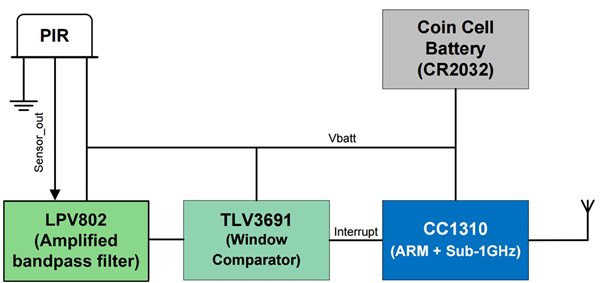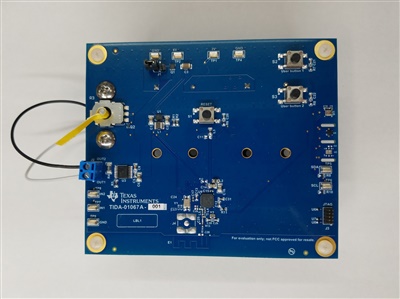SSZT983 august 2017 DRV8833 , LPV802
In my previous blog post, “Power topology choices for power-hungry devices,” I discussed power topology choices to help conserve battery life. Today, I want to discuss other ways to extend battery life for power-hungry designs, including different software improvements and device options.
Depending on the end-equipment characteristics, software can make or break your battery-life expectations. Wirelessly connected devices can improve their battery life by going into standby for longer periods and reporting data less often. Take a sensor-to-cloud Sub-1GHz device, for example. Environmental data such as temperature, humidity and air-purity level do not change very quickly, so a reporting interval of every 30 or 60 minutes would be sufficient. During standby, the sensors could be asleep; only the radio may have to wake up at a quicker interval period to check back into the gateway and see if the user requested fresh data.
Some end equipment has tighter restraints and cannot sleep. With smoke detectors or security devices, for example, detected smoke or breaking glass are critical events that must be reported immediately. There are a couple of tricks for improving battery life via software changes in these applications. To improve battery life, you can decrease the wireless transmit power if the install location is relatively close to the gateway. Another trick is to have the critical sensor always on while the wireless microcontroller (MCU) sleeps, waiting for an event to occur. The sensor wakes up the MCU to send out a critical event message.
Choosing the right low-power device for your application is another way to improve battery life, but with so many devices out there, it can be hard to find the right one. I want to highlight two devices that are useful in the sensor-to-cloud ecosystem. The first is the LPV802 nanopower dual operational amplifier (op amp), which enables always-on very-low-power motion sensing in our Low-Power Wireless PIR Motion Detector ReferenceDesign Enabling Sensor-to-Cloud Networks. There are many uses for op amps, but this device is also great for smoke detectors and any application where low power is a priority.
 Figure 1 Wireless passive infrared
(PIR) motion detector reference design block diagram
Figure 1 Wireless passive infrared
(PIR) motion detector reference design block diagramThe second device that may be of interest is the DRV8833 dual-H bridge motor driver, with low-power sleep and the ability to drive two DC motors or one stepper motor. The adjustable current-limiting circuit is another nice feature of this device. You can extend battery life by avoiding unnecessary motor current from a stalled motor or other fault. Smart electronic locks, damper and actuator systems, and any small-motor applications can benefit from a low-power current-limiting motor driver.
 Figure 2 DRV8833 (U3) Featured on the
Smart Damper Reference Design Board
Figure 2 DRV8833 (U3) Featured on the
Smart Damper Reference Design BoardTexas Instruments has a couple of reference designs that use the DRV8833 motor driver. The Smart Lock Reference Design Enabling 5+ Years Battery Life on 4x AA Batteries and the Smart Damper Control Reference Design with Pressure, Humidity, and Temperature Sensing both demonstrate the implementation of a motor-control device into a smart connected design.
I hope that some of these tips will help you achieve longer battery life in your designs. Take a look at the various reference designs I’ve mentioned here, as well as the others available on TI.com.
Additional Resources:
- Also consider the Low-Power Door and Window Sensor with Sub-1GHz and 10-Year Coin Cell Battery Life Reference Design.
- Read the white paper, “Extending battery life in smart locks.”
- Check out another one of my blog posts about battery life, “Increasing battery life in IoT devices.”
- Download the application report, “Various Reference Voltage Driving Techniques for Motor Drive Current Regulation.”